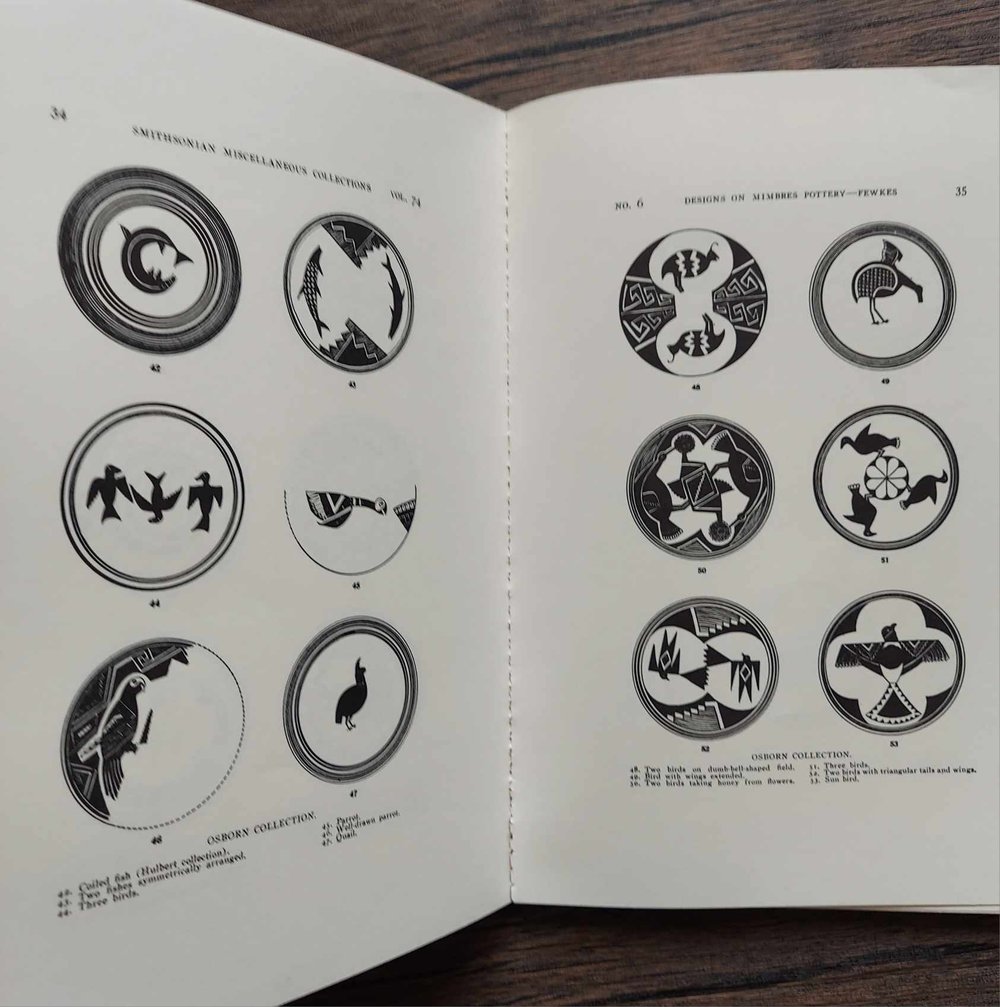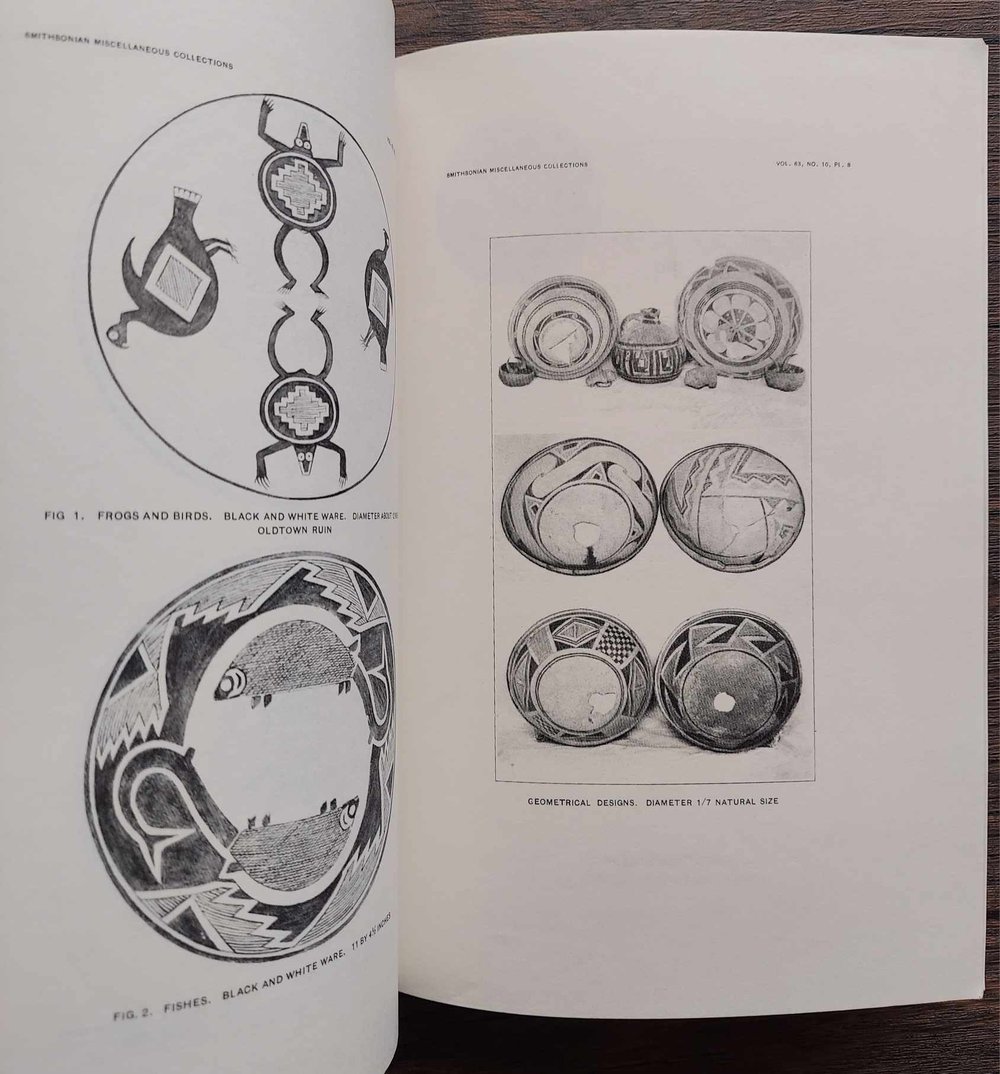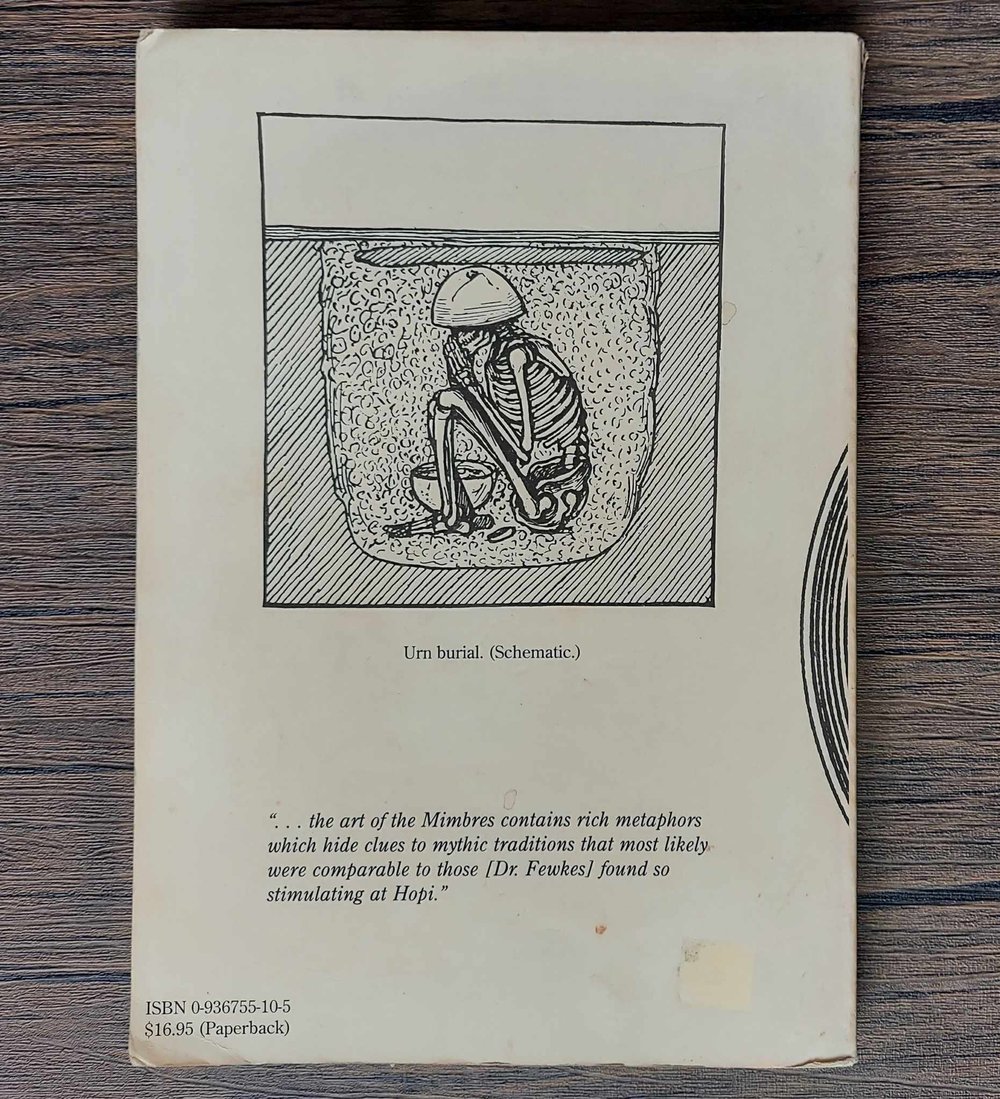The Mimbres: Art and Archaeology, by J. Walter Fewkes







The Mimbres: Art and Archaeology, by J. Walter Fewkes. 1990 softcover. 176 pages, good condition.
The Mimbres culture flourished from around 850–1150 CE in the area that is now Southwestern New Mexico and is best known for black-and-white painted ceramic bowls, depicting an extensive variety of animals and plants and occasionally human figures. Alongside these recognizable figurative paintings, Mimbres artists produced seemingly non-figurative designs that are often described as “geometric”: zigzags, spirals, checkerboard patterns, and other abstract motifs that appear to have little or no apparent reference to the natural world. Their ceremonies incorporated the datura, a flowering plant known for its hallucinogenic properties. When properly prepared and administered, datura produces a kind of trance state, causing the brain to generate a variety of visual effects for the participant, which can include full-blown figurative hallucinations. As such, it was a key component of their ritual practice and was the basis for much of their art.
This reissue of three early essays on Mimbres archaeology and design fills a major gap in the literature on the Mimbres, whose pottery has long fascinated students of the prehistoric Southwest. Fewkes, one of the eminent archaeologists of the early twentieth century, introduced Mimbres art to scholars when he published these essays with the Smithsonian Institution between 1914 and 1924, under the titles Archaeology of the Lower Mimbres Valley, New Mexico, Designs on Prehistoric Pottery from the Mimbres Valley, New Mexico, and Additional Designs on Prehistoric Mimbres Pottery. Long out-of-print, these essays represent the first analysis and description of the complex abstract and representational designs that continue to fascinate us 2,000 years after they were painted.